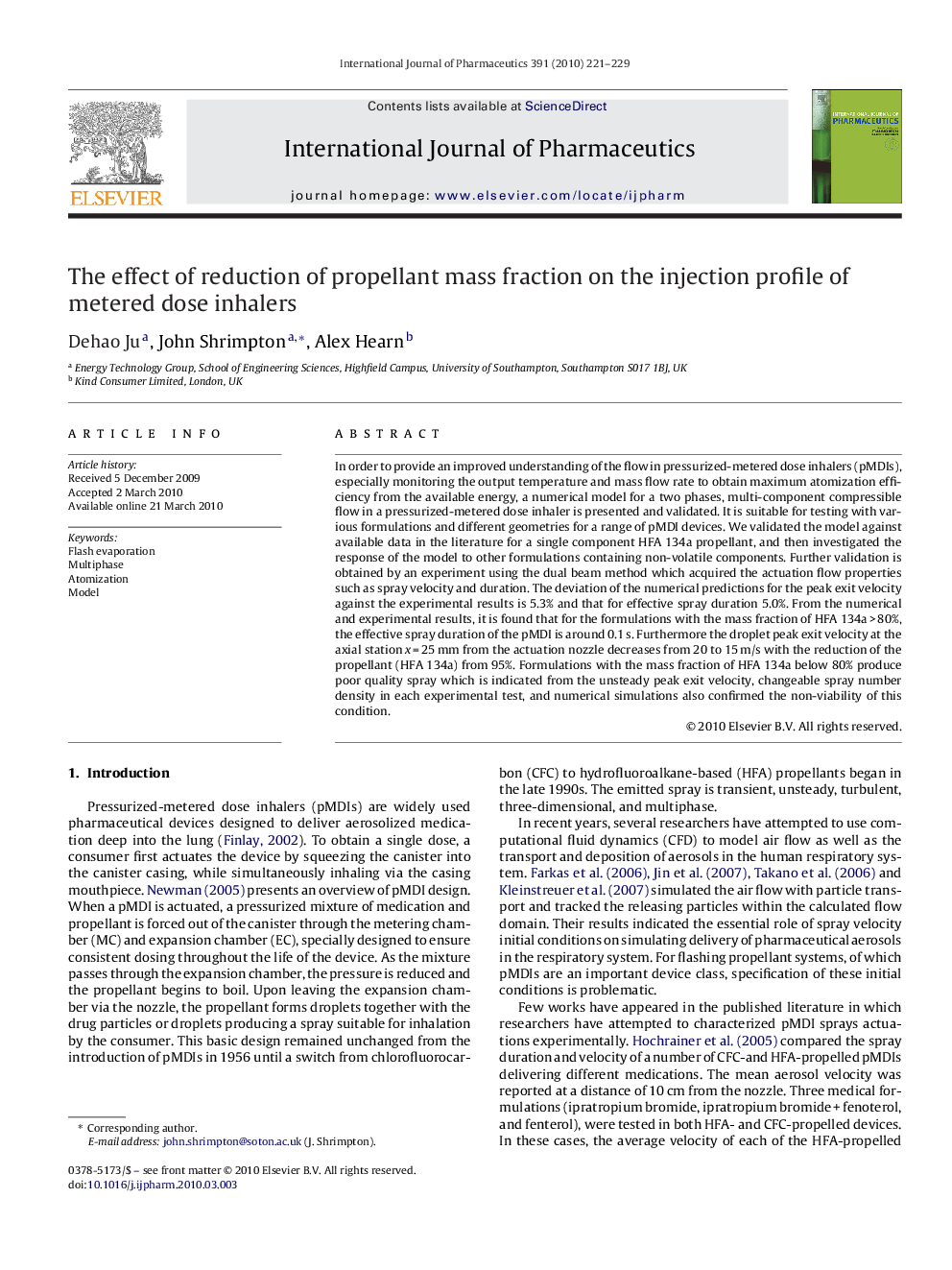| Article ID | Journal | Published Year | Pages | File Type |
|---|---|---|---|---|
| 2504115 | International Journal of Pharmaceutics | 2010 | 9 Pages |
In order to provide an improved understanding of the flow in pressurized-metered dose inhalers (pMDIs), especially monitoring the output temperature and mass flow rate to obtain maximum atomization efficiency from the available energy, a numerical model for a two phases, multi-component compressible flow in a pressurized-metered dose inhaler is presented and validated. It is suitable for testing with various formulations and different geometries for a range of pMDI devices. We validated the model against available data in the literature for a single component HFA 134a propellant, and then investigated the response of the model to other formulations containing non-volatile components. Further validation is obtained by an experiment using the dual beam method which acquired the actuation flow properties such as spray velocity and duration. The deviation of the numerical predictions for the peak exit velocity against the experimental results is 5.3% and that for effective spray duration 5.0%. From the numerical and experimental results, it is found that for the formulations with the mass fraction of HFA 134a > 80%, the effective spray duration of the pMDI is around 0.1 s. Furthermore the droplet peak exit velocity at the axial station x = 25 mm from the actuation nozzle decreases from 20 to 15 m/s with the reduction of the propellant (HFA 134a) from 95%. Formulations with the mass fraction of HFA 134a below 80% produce poor quality spray which is indicated from the unsteady peak exit velocity, changeable spray number density in each experimental test, and numerical simulations also confirmed the non-viability of this condition.
